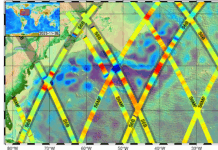In today’s rapidly advancing technological landscape, artificial intelligence (AI) is becoming increasingly sophisticated and capable of simulating and predicting real-world scenarios. This capability is essential for the development of the next generation of physical AI systems, such as robots and autonomous vehicles. Ming-Yu Liu, a vice president of research at NVIDIA and an IEEE Fellow, recently shared insights on this topic during an episode of the NVIDIA AI Podcast, highlighting the importance of what are known as “World Foundation Models” (WFMs).
World Foundation Models are advanced neural networks designed to simulate physical environments. They are capable of generating intricate video content from text or image inputs, and they can predict the evolution of scenes by integrating current visual data with specific actions, like prompts or control signals. This ability to simulate and foresee future scenarios is crucial for developers of physical AI systems. According to Liu, WFMs enable these systems to “imagine many different environments and can simulate the future, so we can make good decisions based on this simulation.”
One of the primary applications of WFMs is in physical AI systems, which include robots and self-driving cars. These systems need to interact with the physical world in a way that is both safe and efficient. The ability to predict outcomes and adapt to various environments is fundamental to their success.
### Understanding the Importance of World Foundation Models
Creating accurate world models typically requires extensive datasets, which can be both difficult and costly to obtain. WFMs offer a solution by generating synthetic data, which provides a diverse and rich dataset that significantly improves the training process. This synthetic data is a virtual representation of real-world data that can be used to train AI models without the need for actual physical data collection.
Moreover, testing physical AI systems in the real world can be resource-intensive and risky. WFMs allow for the simulation and testing of these systems in controlled, virtual 3D environments. This approach mitigates the risks and costs associated with real-world trials while still offering a robust testing ground for AI systems.
### Open Access and Development of World Foundation Models
During the CES trade show, NVIDIA unveiled its new platform called NVIDIA Cosmos. This platform is designed to expedite the development of generative WFMs, which are crucial for advancing physical AI systems like autonomous vehicles and robotics. The open and accessible nature of the platform means that it provides pretrained WFMs based on diffusion and auto-regressive architectures. These models include tokenizers that can compress video data into tokens compatible with transformer models, which are a type of deep learning model used for processing sequential data.
Liu noted that this open platform equips enterprises and developers with the necessary tools to construct large-scale models. It offers flexibility, allowing teams to explore different training and fine-tuning strategies or even develop customized models to meet specific requirements.
### Enhancing AI Workflows Across Diverse Sectors
The introduction of WFMs is expected to significantly enhance AI workflows and development across various industries. Liu particularly emphasized the potential impact on the self-driving car and humanoid robot industries. In the context of self-driving cars, WFMs can simulate a variety of environments that might be challenging to replicate in the real world. These simulations ensure that the AI agent behaves appropriately under different conditions.
For self-driving cars, WFMs enable comprehensive testing and optimization by simulating various weather patterns and traffic scenarios. This ensures that the vehicle can operate safely and efficiently before being deployed on actual roads. In the field of robotics, WFMs allow developers to simulate and verify the behavior of robotic systems in diverse environments, ensuring safe and efficient task performance before deployment.
NVIDIA is actively collaborating with companies like 1X, Huobi, and XPENG to tackle challenges in physical AI development and push their systems forward. However, Liu acknowledged that the development of WFMs is still in its early stages. He emphasized the need to continue improving these models and finding ways to seamlessly integrate them into physical AI systems to maximize their benefits.
To gain further insights, listeners can tune into the podcast featuring Ming-Yu Liu or read the transcript available online. Additional information about NVIDIA Cosmos and the latest advancements in generative AI and robotics can be found by watching the CES keynote delivered by NVIDIA’s founder and CEO, Jensen Huang, or by attending NVIDIA sessions at the show.
In conclusion, World Foundation Models represent a significant step forward in AI development. Their ability to simulate and predict real-world scenarios provides substantial benefits to industries reliant on physical AI systems. As these models continue to evolve, they promise to revolutionize how AI interacts with the world, leading to safer and more efficient technological solutions.
For more Information, Refer to this article.


































